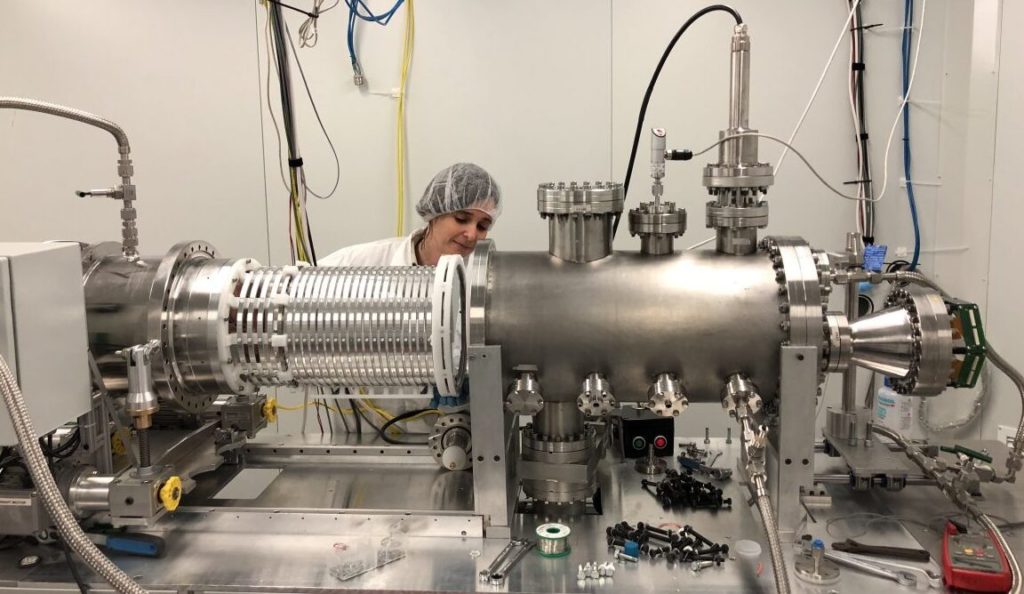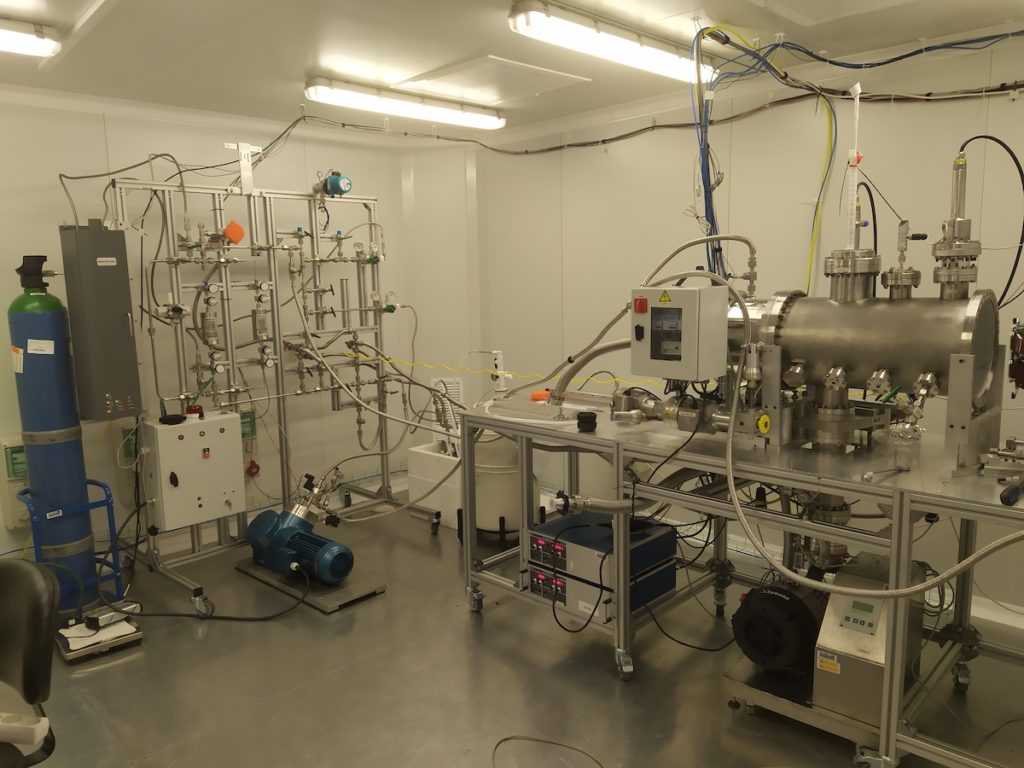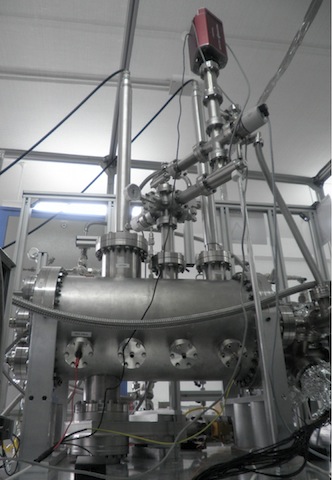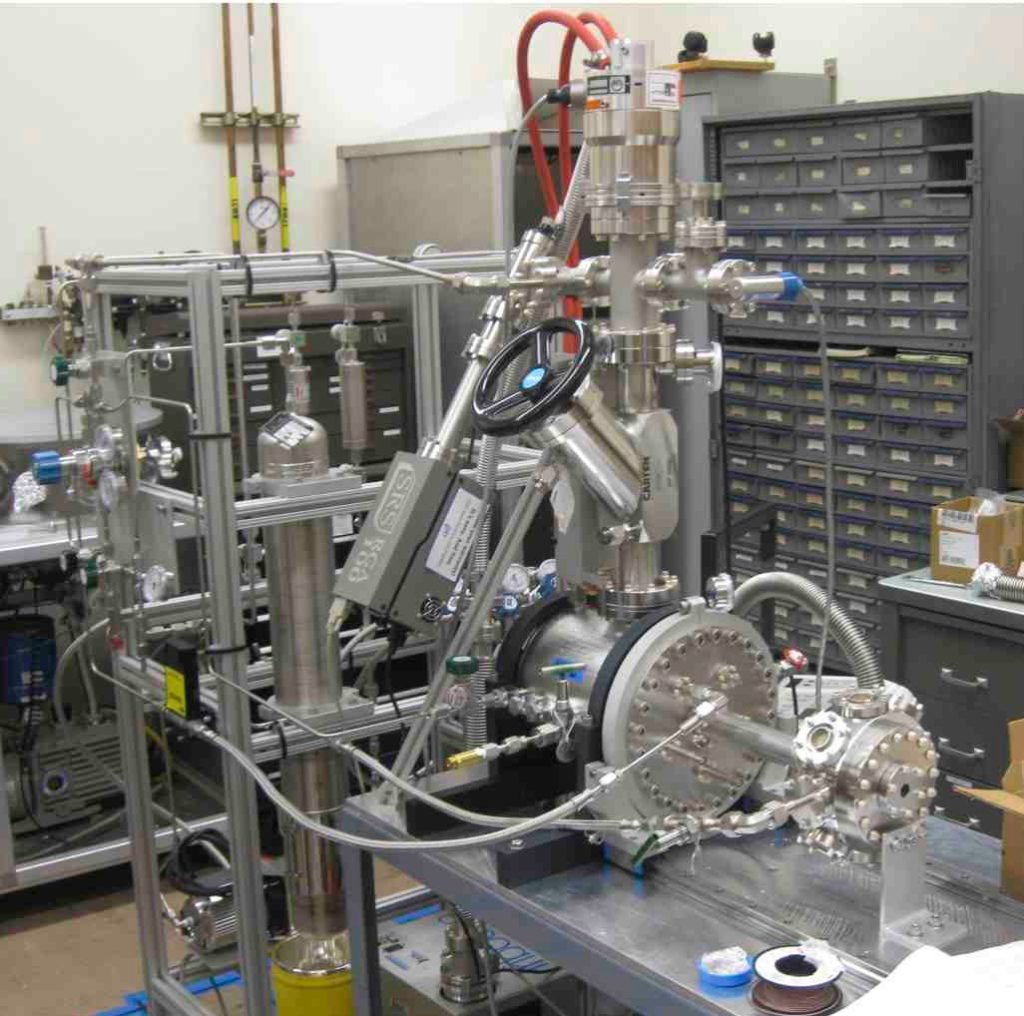NEXT-DEMO++

The NEXT-DEMO prototype (on the left), which was essential during the first phase of the NEXT project, was remodeled during 2018 to provide an ideal test-bench to develop future NEXT detectors, giving place to the new NEXT-DEMO++. In particular, this detector was designed to study several gas mixtures that could potentially reduce the diffusion of the electrons during their drift towards the anode. In addition, as the NEXT-DEMO++ uses the same sensors as NEW and NEXT-100 it is currently being used as a prototype to fine-tune the current design of the NEXT-100 detector.
The detector is located in a clean-room at the IFIC laboratories, in Valencia. The NEXT-DEMO++ re-uses the old NEXT-DEMO vessel but the internal parts of the detector like the field cage, the tracking plane, and the energy plane have been rebuilt following a similar design as the current NEXT-100 detector.

The NEXT-DEMO++ energy plane consists of 3 Hamamatsu R11410-10 PMTs, the same model as in NEXT-White and NEXT-100. They are placed in a stainless steel plate with 3 copper windows surrounded by brazed sapphire windows that cover the apertures. The sapphire windows are coated with TPB in order to improve the light collection efficiency and with a conductive layer of ITO to electrically protect the PMTs from the electric field in the TPC. The NEXT-DEMO++ tracking plane is composed of 4 kapton boards and each board is an 8×8 array of SiPMs resulting in a total of 256 sensors. The boards are covered by PTFE masks in order to improve the light collection efficiency.
The detector is currently at 10 bar pressure and is devoted to studying the optimal configuration of the tracking plane for future NEXT detectors.
NEXT-DEMO

The IFIC NEXT-DEMO chamber was a large prototype of the baseline design for NEXT presented in the LOI.
It was an asymmetric SOFT (Separated-Optimized Function for Tracking) TPC, with SiPMs (coated with a wavelength shifter) in the anode and an array of pressure resistant photomultipliers in the cathode. The detector was housed in a 60cm long cylindrical chamber and has an hexagonal fiducial region of 30cm drift length and 16cm diagonal length.
The scintillation light was observed by 19 Hamamatsu R7378A PMTs (capable of withstanding a pressure of 10 bar) which provided the energy measurement and the t0 of the event. An electric field of up to 40 kV drifted the ionization charge to the electroluminescence region. Such a region was defined at the end of the drift region by two grids separated by 5mm with 3.5 kV/cm bar potential drop and was viewed by 248 SiPMs (model S10362- 11-025C). The SiPMs were placed in Daughter Boards (DB) that hold 16 SiPMs each and coated by a wavelength shifting TPB. The DB, in turn, fitted into a large Mother Board that channels the traffic of voltages and signals.
In order to improve light transport, the walls of the fiducial volume were made of polytetrafluoroethylene panels. A gas purification/re-circulation system was designed and built ad hoc.
NEXT-DEMO started operations in November 2010 and plenty of data have been collected.
NEXT-DBDM

The LBNL chamber was optimized to operate at the largest pressures considered for NEXT (20 bar). Its aim was to prove the energy resolution of NEXT, thus only an energy plane was constructed, using pressure-resistant PMTs but no tracking plane.
The gas system was fully operational and was routinely operated near its maximum rated pressure of 17 bar. Five conductive meshes established the electric potentials in the TPC. The walls of the TPC were made of PTFE, bare, on the internal side to reflect UV photons and with conductive stripes (at intermediate potentials) on the outside to establish uniform electric field lines along the TPC main axis. The drift region was 8 cm long and the maximum HV on the dedicated feedthroughs was both +-20 kV. It then allowed one to measure the energy resolution for drift fields from 0 to 4 kV/cm while maintaining a constant EL gain.
The system was operational at LBNL since December 2010 and proved an energy resolution of 1.8% FWHM in the Cs-137 peak. Once extrapolated to the Qββ of Xe-136, it converts into ~0.9% FWHM.
